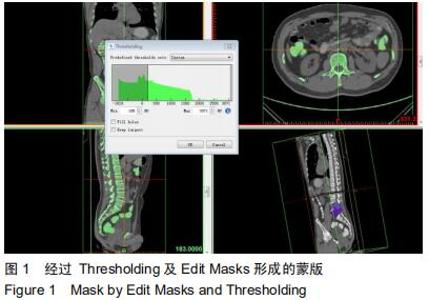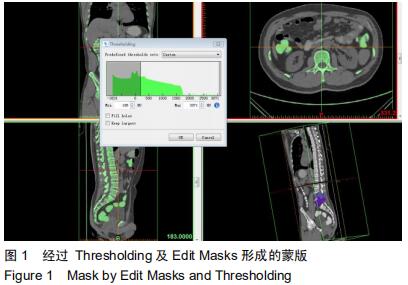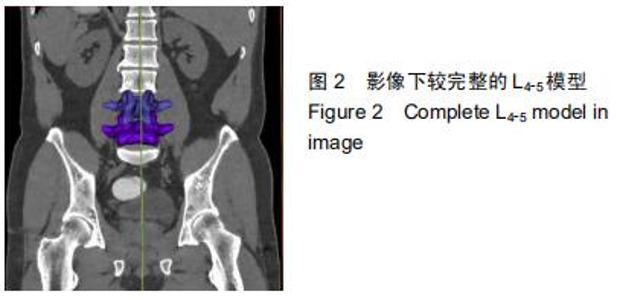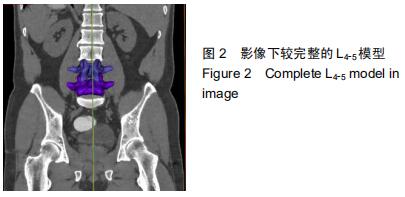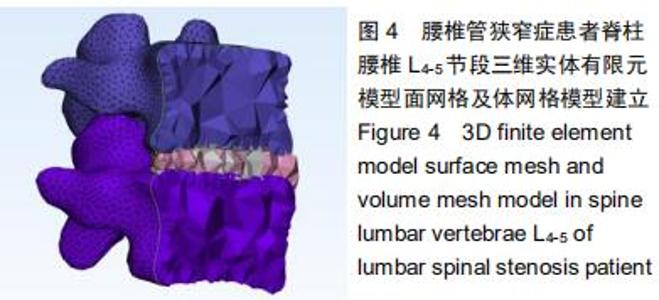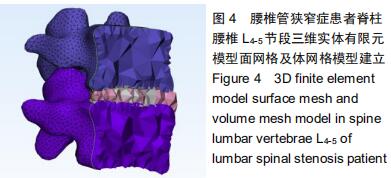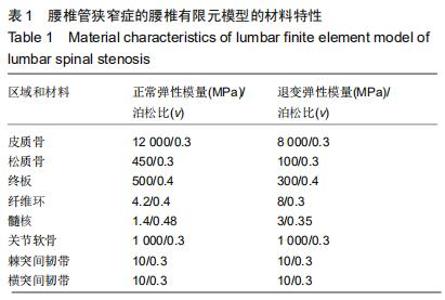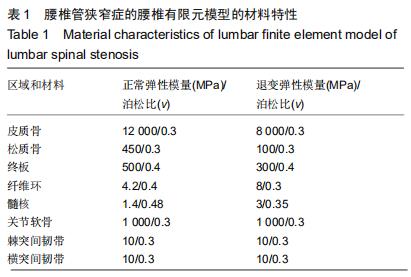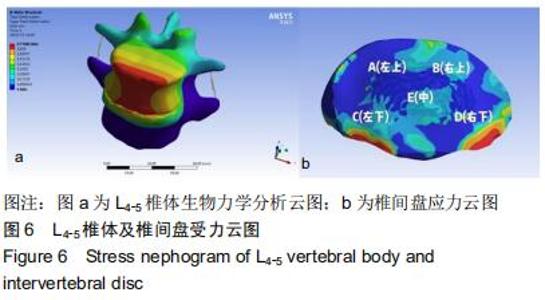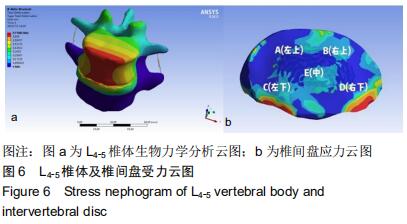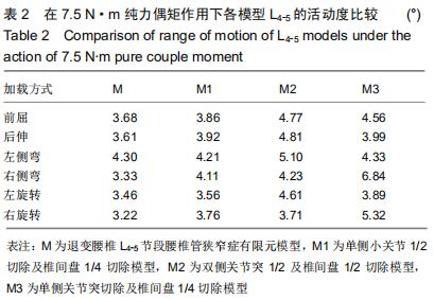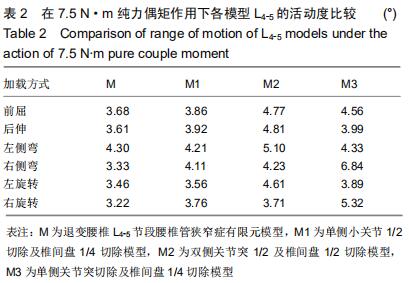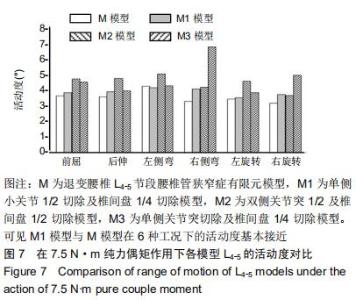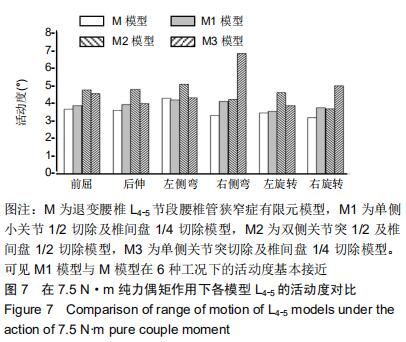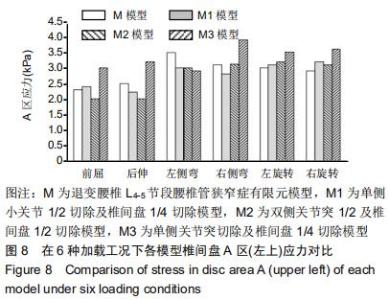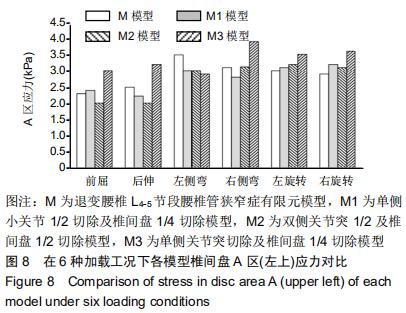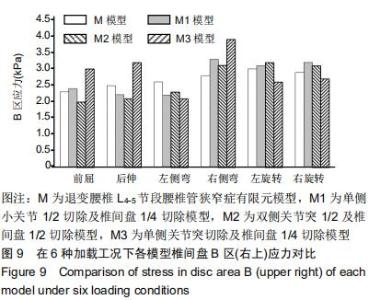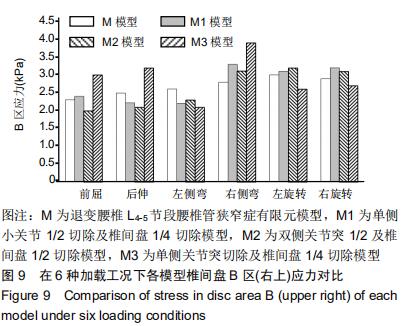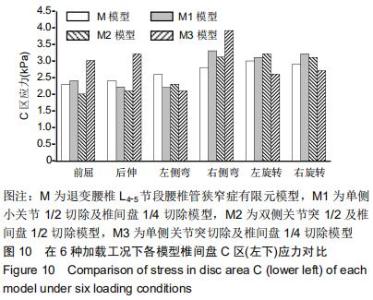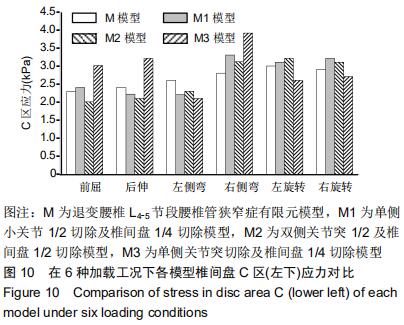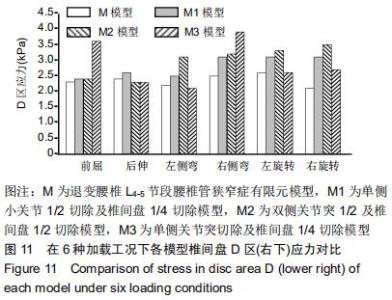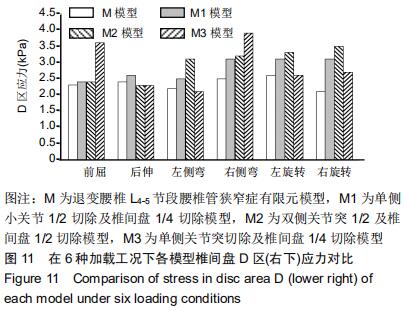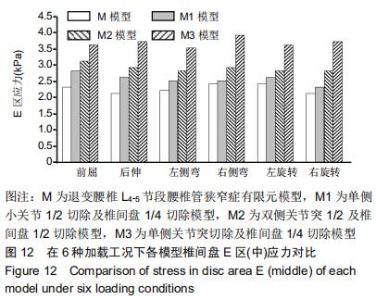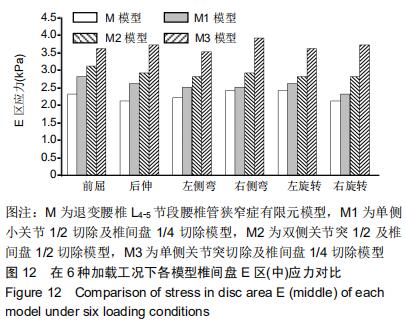Chinese Journal of Tissue Engineering Research ›› 2020, Vol. 24 ›› Issue (27): 4291-4296.doi: 10.3969/j.issn.2095-4344.2783
Previous Articles Next Articles
A finite element model of full endoscope lumbar fenestration and biomechanical characteristics
Liu Jinyu, Ding Yu, Jiang Qiang, Cui Hongpeng, Lu Zhengcao
- Department of Rehabilitation Medicine, the Sixth Medical Center of PLA General Hospital, Beijing 100048, China
-
Received:2019-12-26Revised:2020-01-04Accepted:2020-02-12Online:2020-09-28Published:2020-09-07 -
Contact:Ding Yu, MD, Chief physician, Professor, Master’s supervisor, Department of Rehabilitation Medicine, the Sixth Medical Center of PLA General Hospital, Beijing 100048, China -
About author:Liu Jinyu, Physician, Department of Rehabilitation Medicine, the Sixth Medical Center of PLA General Hospital, Beijing 100048, China -
Supported by:the Capital Clinical Diagnosis and Treatment Technology Research and Demonstration Application Project, No. Z191100006619028
CLC Number:
Cite this article
Liu Jinyu, Ding Yu, Jiang Qiang, Cui Hongpeng, Lu Zhengcao. A finite element model of full endoscope lumbar fenestration and biomechanical characteristics[J]. Chinese Journal of Tissue Engineering Research, 2020, 24(27): 4291-4296.
share this article
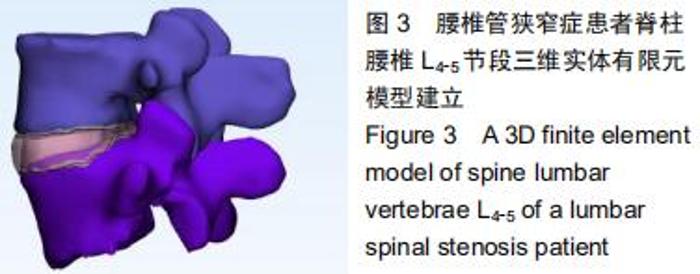
1.4.2 人体脊柱L4-5节段椎间盘三维模型建立 椎间盘由纤维环、髓核和上下终板组成,椎间盘的建立需要在Mimics 20.0和3-matic中共同完成。首先应用Mimics 20.0中draw L4-5节段椎间盘,将L4-5椎体及椎间盘进行布尔操作,得到贴合L4-5椎体的椎间盘。将贴合的椎间盘导入3-matic中,通过Local Smoothing和push & pull命令打磨椎间盘,通过Surface命令创造出上下终板面,通过Wrap及Boolean进行重叠部分的布尔运算得到上下终板结构。髓核的建立通过缩放椎间盘,拖动位置按照实际椎间盘中纤维环和髓核的比例进行,利用终板进行布尔切割建立中间髓核,纤维环主要通过布尔运算建立,最终得到腰椎管狭窄症患者L4-5的椎间盘有限元模型[10-11]。至此,腰椎管狭窄症患者腰椎L4-5的三维实体模型建立工作基本完成,见图3。 "
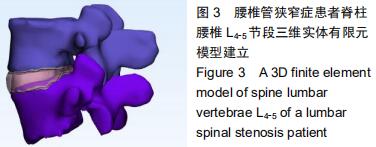
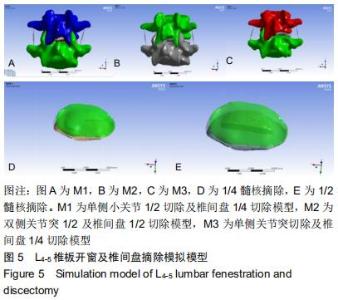
1.4.4 各种手术模拟的有限元模型建立 在腰椎管狭窄症模型的基础上,应用3-matic模拟3种术后模型:①M1:连接一侧棘突根部及峡部两点,并测量长度,取中点到下关节突尖端。切除部分椎板及内侧1/2关节突,继而连接椎间盘横轴和纵轴切除1/4髓核,建立单侧1/2小关节及1/4髓核切除椎板开窗模型。②M2:连接双侧棘突根部及峡部两点,并测量长度,取中点到下关节突尖端。切除双侧部分椎板及内侧关节突,连接椎间盘髓核横轴和纵轴切除髓核,建立双侧1/2小关节及1/2髓核切除椎板开窗模型。③M3:平行上下终板将一侧关节突完全切除,连接椎间盘髓核横轴和纵轴进行部分髓核切除,建立单侧整体小关节突及1/4髓核切除椎板开窗模型[4],见图5。 "
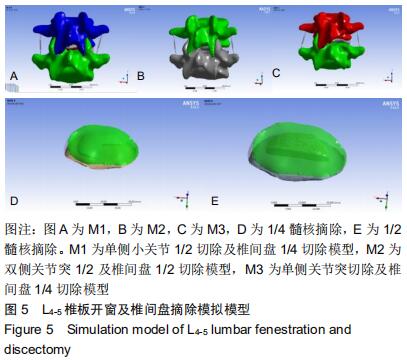
|
[1] MARQUES CJ, HILLEBRAND H, PAPAVERO L. The clinical significance of redundant nerve roots of the cauda equina in lumbar spinalstenosis patients: A systematic literature review and meta analysis. Clin Neurol Neurosurg. 2018;174:40-47.
[2] MINAMIDE A, YOSHIDA M, SIMPSON AK, et al. Minimally invasive spinal decompression for degenerative lumbar spondylolisthesis and stenosis maintains stability and may avoid the need for fusion. Bone Joint J. 2018;100-B(4): 499-506.
[3] NELLENSTEIJN J, OSTELO R, BARTELS R, et al. Transforaminal endoscopic surgery for symptomatic lumbar disc herniations: a systematic review of the literature. Eur Spine J. 2010;19(2):181-204.
[4] 丁宇,张建军,崔洪鹏,等. 双管大通道椎板间内镜术式治疗腰椎管狭窄症[J]. 转化医学杂志,2018,7(5): 289-293.
[5] HOOGLAND T, SCHUBERT M, MIKLITZ B, et al. Transformational posterolateral endoscopic discectomy with or without the combination of a low-dose chymopapain: aprospective randomized study in 280 consecutive cases. Spine. 2006; 31(24): E890-E897.
[6] 郝剑,朴哲,李继海,等.基于CT图像和逆向工程方法建立正常人体腰椎三维有限元模型[J].中国组织工程研究,2012,16(4): 593-596.
[7] MEAKIN J, SMITH F, GILBERT F, et al. The effect of axial load on thesagittal plane curvature of the upright human spine in vivo. J Biomech. 2008;41(13): 2850-2854.
[8] CHEN C, SHIH S. Biomechanical analysis of a new lumbarinterspinous device with optimized topology. Med Biol Eng Comput. 2018;56(8): 1333-1341.
[9] LI L, SHEN T, LI Y. A finite element analysis of stress distribution and disk displacement in response to lumbar rotation manipulation in the sitting and side-lying positions.J Manipulative Physiol Ther. 2017;40(8):580-586.
[10] COOMBS DJ, RULLKOETTER PJ, LAZ PJ. Efficient probabilistic finiteelement analysis of a lumbar motion segment. J Biomech. 2017;61: 65-74.
[11] KIM H, LIM DH, OH HJ, et al. Effects of nonlinearity in the materials used for the semi-rigid pedicle screw systems on biomechanical behaviors of the lumbar spine after surgery. Biomed Mater. 2011;6(5): 055005.
[12] 王加谋,陈超,李前龙,等. 退变椎间盘在骨质疏松椎体应力分布中作用的有限元方法研究[J]. 中国中医骨伤科杂志,2007,15(7): 41-44, 48.
[13] 周仕炼,胡星新,杨曦,等. 退变性腰椎侧凸六种工况运动下的生物力学的有限元分析[J].华西医学,2018,33(9): 1099-1105
[14] 郑琦,应小樟,石仕元,等. 复杂性腰椎管狭窄症的有限元建模与分析[J].第三军医大学学报,2012,34(18):1897-1900.
[15] 买买提明.艾尼,陈华磊. Ansys Workbench18.0高级应用与实例解析[J].北京:机械工业出版社,2018:152-159.
[16] PYLES C, ZHANG J, DEMETROPOULOS C, et al. Material parameter determination of an l4-l5 motion segment finite element model under high loading rates. Biomed Sci Instrum. 2015;51: 206-213.
[17] YANG K, KING A. Mechanism of facet load transmission as ahypothesis for low-back pain. Spine. 1984;9(6): 557-565.
[18] DING Y, ZHU TY, ZHANG JJ, et al. Percutaneous endoscopicinter laminarapproach medial foraminal decompression in treating lumbar disc herniation orspinal stenosis. Spine. 2017;6: 375-381.
[19] 赵太茂,邱贵兴,仉建国,等. 291例腰椎管狭窄症患者的临床特点分析[J].中国脊柱脊髓杂志,2006,16(11): 812-815.
[20] ESPINHA LC, FERNANDES PR, FOLGADO J. Computational analysis of bone remodeling during an anterior cervical fusion. J Biomech. 2010; 43(15): 2875-2880.
[21] 樊瑜波,邓小燕:生物力学建模仿真与应用[M].上海:上海交通大学出版社,2017:1-5.
[22] 孙凤龙,李军,梁庆晨,等. 开放手术与脊柱内镜下行椎板减压治疗退变性 腰椎管狭窄症的临床对照研究[J]. 中华骨与关节外科杂志, 2018,11(11):805-811. |
| [1] | Xu Feng, Kang Hui, Wei Tanjun, Xi Jintao. Biomechanical analysis of different fixation methods of pedicle screws for thoracolumbar fracture [J]. Chinese Journal of Tissue Engineering Research, 2021, 25(9): 1313-1317. |
| [2] | Yao Rubin, Wang Shiyong, Yang Kaishun. Minimally invasive transforaminal lumbar interbody fusion for treatment of single-segment lumbar spinal stenosis improves lumbar-pelvic balance [J]. Chinese Journal of Tissue Engineering Research, 2021, 25(9): 1387-1392. |
| [3] | Chen Xinmin, Li Wenbiao, Xiong Kaikai, Xiong Xiaoyan, Zheng Liqin, Li Musheng, Zheng Yongze, Lin Ziling. Type A3.3 femoral intertrochanteric fracture with augmented proximal femoral nail anti-rotation in the elderly: finite element analysis of the optimal amount of bone cement [J]. Chinese Journal of Tissue Engineering Research, 2021, 25(9): 1404-1409. |
| [4] | Zhou Jihui, Li Xinzhi, Zhou You, Huang Wei, Chen Wenyao. Multiple problems in the selection of implants for patellar fracture [J]. Chinese Journal of Tissue Engineering Research, 2021, 25(9): 1440-1445. |
| [5] | Xu Yulin, Shen Shi, Zhuo Naiqiang, Yang Huilin, Yang Chao, Li Yang, Zhao Heng, Zhao Lu. Biomechanical comparison of three different plate fixation methods for acetabular posterior column fractures in standing and sitting positions [J]. Chinese Journal of Tissue Engineering Research, 2021, 25(6): 826-830. |
| [6] | Cai Qunbin, Zou Xia, Hu Jiantao, Chen Xinmin, Zheng Liqin, Huang Peizhen, Lin Ziling, Jiang Ziwei. Relationship between tip-apex distance and stability of intertrochanteric femoral fractures with proximal femoral anti-rotation nail: a finite element analysis [J]. Chinese Journal of Tissue Engineering Research, 2021, 25(6): 831-836. |
| [7] | Song Chengjie, Chang Hengrui, Shi Mingxin, Meng Xianzhong. Research progress in biomechanical stability of lateral lumbar interbody fusion [J]. Chinese Journal of Tissue Engineering Research, 2021, 25(6): 923-928. |
| [8] | Liu Zhao, Xu Xilin, Shen Yiwei, Zhang Xiaofeng, Lü Hang, Zhao Jun, Wang Zhengchun, Liu Xuzhuo, Wang Haitao. Guiding role and prospect of staging and classification combined collapse prediction method for osteonecrosis of femoral head [J]. Chinese Journal of Tissue Engineering Research, 2021, 25(6): 929-934. |
| [9] | Xie Chongxin, Zhang Lei. Comparison of knee degeneration after anterior cruciate ligament reconstruction with or without remnant preservation [J]. Chinese Journal of Tissue Engineering Research, 2021, 25(5): 735-740. |
| [10] | Nie Shaobo, Li Jiantao, Sun Jien, Zhao Zhe, Zhao Yanpeng, Zhang Licheng, Tang Peifu. Mechanical stability of medial support nail in treatment of severe osteoporotic intertrochanteric fracture [J]. Chinese Journal of Tissue Engineering Research, 2021, 25(3): 329-333. |
| [11] | Tan Jiachang, Yuan Zhenchao, Wu Zhenjie, Liu Bin, Zhao Jinmin. Biomechanical analysis of elastic nail combined with end caps and wire fixation for long oblique femoral shaft fractures [J]. Chinese Journal of Tissue Engineering Research, 2021, 25(3): 334-338. |
| [12] | Chen Lu, Zhang Jianguang, Deng Changgong, Yan Caiping, Zhang Wei, Zhang Yuan. Finite element analysis of locking screw assisted acetabular cup fixation [J]. Chinese Journal of Tissue Engineering Research, 2021, 25(3): 356-361. |
| [13] | Zhou Jihui, Li Xinzhi, Zhou You, Huang Wei, Chen Wenyao. Comparison of the advantages and disadvantages of multiple implants in treatment of traumatic dislocation of sternoclavicular joint [J]. Chinese Journal of Tissue Engineering Research, 2021, 25(3): 443-448. |
| [14] | Li Kun, Li Zhijun, Zhang Shaojie, Gao Shang, Sun Hao, Yang Xi, Wang Xing, Dai Lina . A 4-year-old child model of occipito-atlanto-axial joints established by finite element dynamic simulation [J]. Chinese Journal of Tissue Engineering Research, 2021, 25(24): 3773-3778. |
| [15] | Shu Qihang, Liao Yijia, Xue Jingbo, Yan Yiguo, Wang Cheng. Three-dimensional finite element analysis of a new three-dimensional printed porous fusion cage for cervical vertebra [J]. Chinese Journal of Tissue Engineering Research, 2021, 25(24): 3810-3815. |
| Viewed | ||||||
|
Full text |
|
|||||
|
Abstract |
|
|||||
